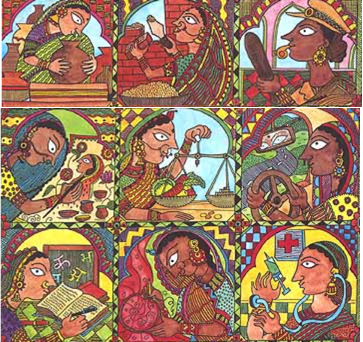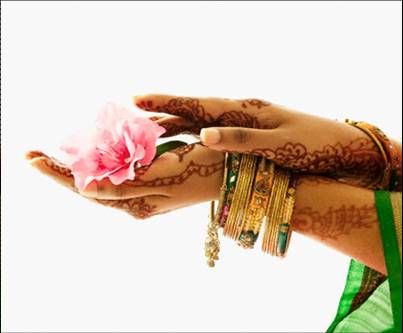From The Peopling of New York City
While observing the neighborhood of Jackson Heights, it is easy to see how important family is to the South Asian community. Walking down 74th Street, we see dozens of families talking, shopping, and eating together. At the same time, we take notice of the many sari shops, jewelry stores, and wedding planners present in the vicinity. Clearly, family is one of the most significant aspects of life for South Asians, and the traditions that go along with it, from wedding ceremonies, to the various roles of gender, to the attitudes of the youth, tell us a lot about the people of Jackson Heights.
"Its like, you know, everything I learned from my parents is the Indian aspect, but growing up, I’ve gotten all these American mannerisms and habits, so I’m a blend of both." - Jeffin Mathew, 18
- Because this neighborhood is ever-changing and strongly influenced by immigration, it is only natural for us to discern the impact of immigration on the traditions and customs of the family, particularly the youth. How do the younger generations, who are more susceptible to "Americanization," deal with the conflict between being traditionally Indian and being fully secular? As we have seen, this balance varies from family to family. While some parents are less eager to throw their kids out into American society, there are some who don't mind a transition into Western culture. Parents must decide for themselves how to raise their children, and it seems that the influence of parents is much stronger than that of the United States, though the expectations are continually becoming more and more relaxed. Examples of this can be seen in an Interview with Jeffin Mathew, an NYU student, an interview with a young adult South Asian in Jackson Heights, as well as in an Interview with Sunita, a jewelry store owner in Jackson Heights.
Go to Youth and Family Structure Page
"I feel that in America, being a woman is much easier and my opportunities to pursue any career or path I choose are greater than what I would have in Pakistan. My mother grew up in a different environment and a different society so our ways of thinking differ. She grew up in a society where it was looked down upon for a girl in say a gathering to even laugh loudly or put on something like chapstick in public." - Pakistani Young Woman, 18 from Interview with Sibgha Zaheer
"Over here, women are surrounded by a culture that’s centered on the career. Here they don’t believe in marrying women off and women have more of a chance to rise financially." - Kanushree Jain, 19, from Interview with Kanushree Jain.
- Women's roles in the infrastructure of Jackson Heights are representative of their role in regular family life. Females working in Jackson Heights maintain positions such as sari shop clerks and jewelry aids. On the streets, the more traditional women is seen with her children, shopping for jewelry and clothing, and grocery shopping. Usually, South Asian women are seen on the streets dressed in traditional Saris. It is clear that Jackson Heights depicts women as a wives, mothers, homemakers and nurturers. However, in the greater New York city, South Asian women have gone beyond their traditional home-making roles, although many still incorporate their traditional duties. Economic pressures and societal pressures in the U.S. have pushed women to work, have professions, and be successful. Often, women's roles can be very conflicting but, in many cases, women are successfully balancing their many hats. This section explores the connection between family and professional life, and how these two aspects of life have evolved and remained constant for South Asian women in Jackson Heights. Additionally, distinctions and similarities are made between women of various areas including India, Pakistan, and Bangladeshi.
Go to Female Independence Page
'"In India, love is romanticized when you’re young but after that it doesn’t mean anything. It’s not for love. Companionship is greater; the family unit is greater than love." - Neena Jain
- Marriage is an integral part of Indian culture, with traditions and ceremonies that are prevalent and significant in India as well as in the United States. This can be explored through the small shopping district of "Little India" in Jackson Heights, Queens. Sari shops, jewelry stores, and wedding planners become representative of not only an ethnic identity, but also a wedding industry. Generational differences and acculturation of American culture have played a role in influencing wedding styles and preferences of arranged and love marriages. However, interviews with young South Asians, reveal that some may still be sticking to the traditional arranged marriage and its advantages, while others want some parental guidance & control and thus lean toward "assisted" marriages, like Nashita Karim. The importance of family is always stressed by parents & elders when an individual gets married:
Go to Marriage and Wedding Industry Page

Interviews and Research:
interview with Jackson Heights wedding related businesses
